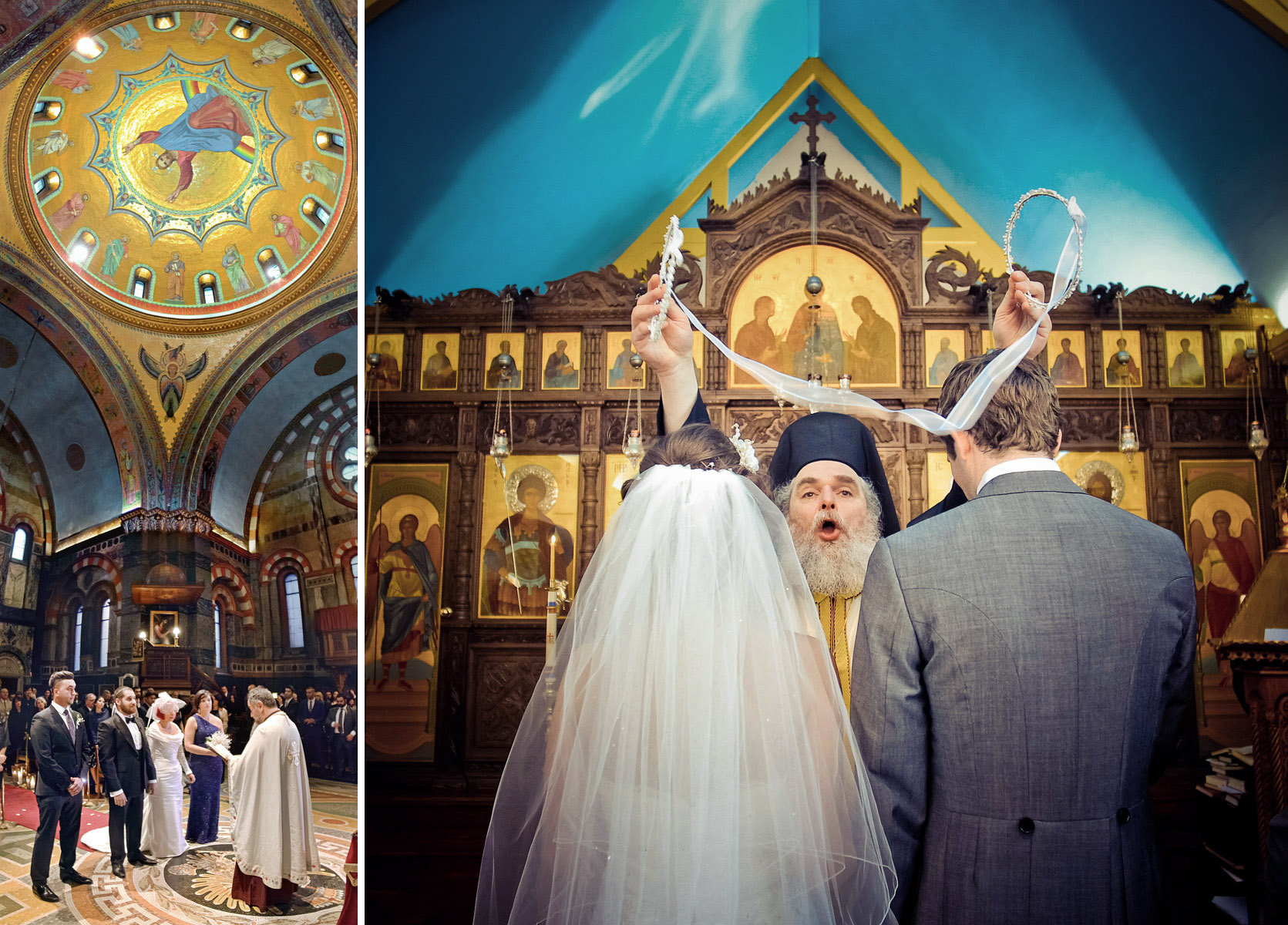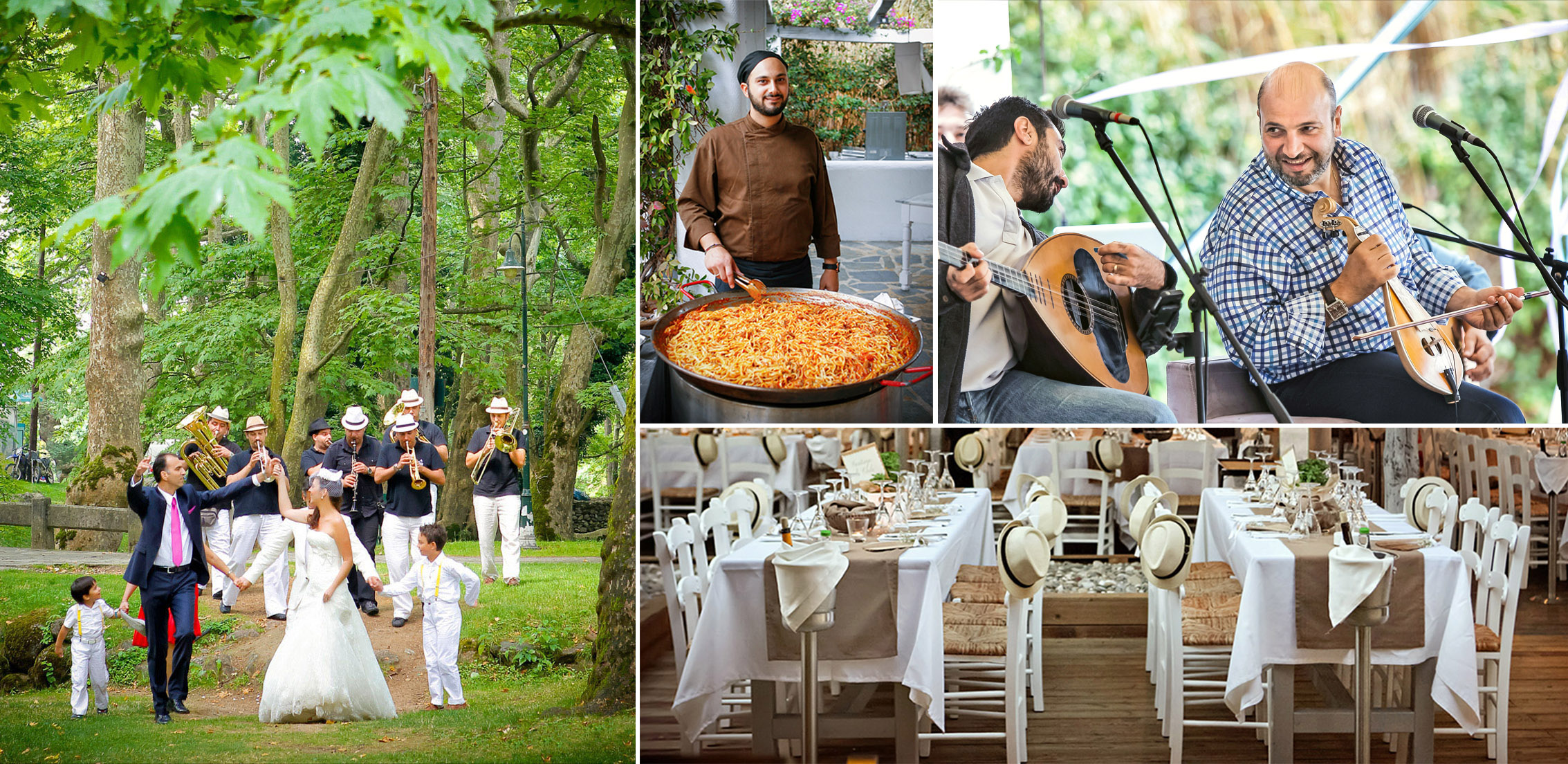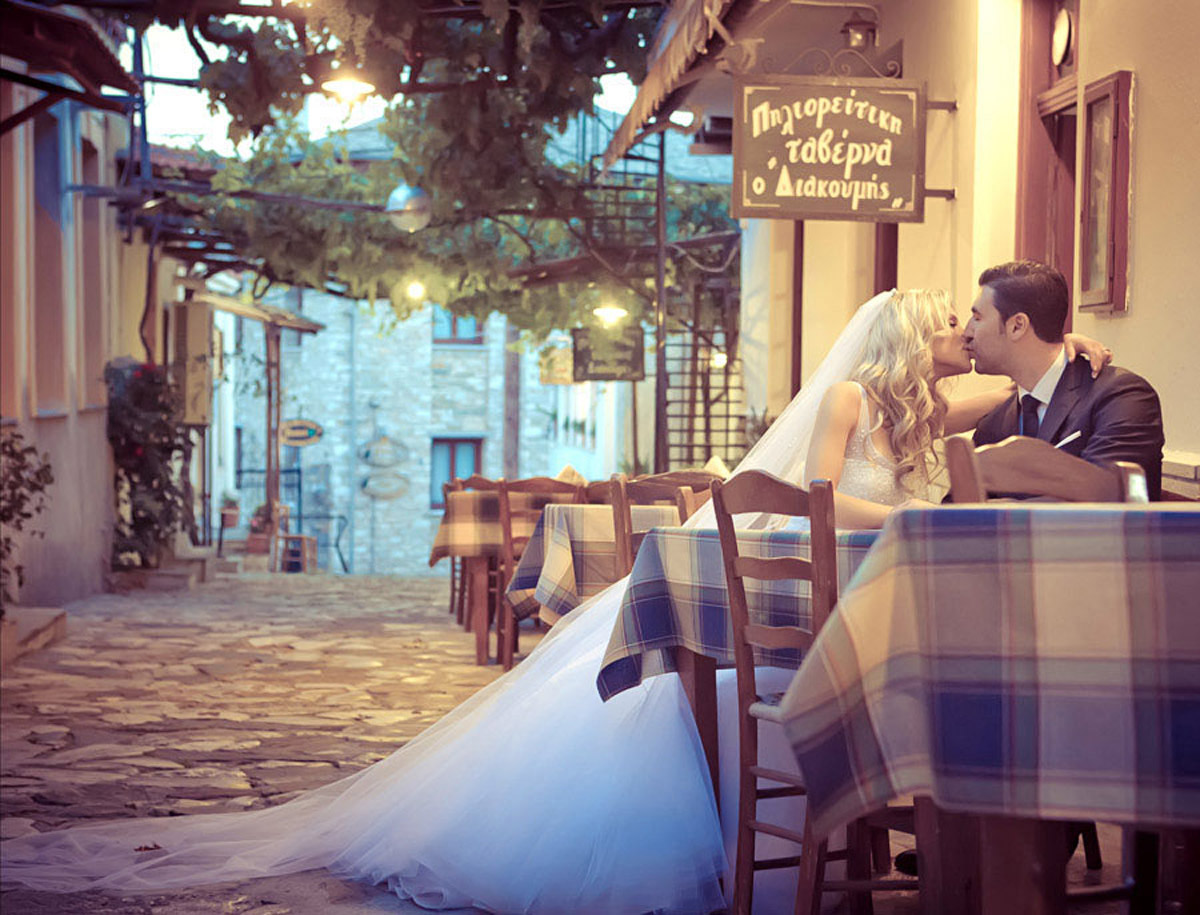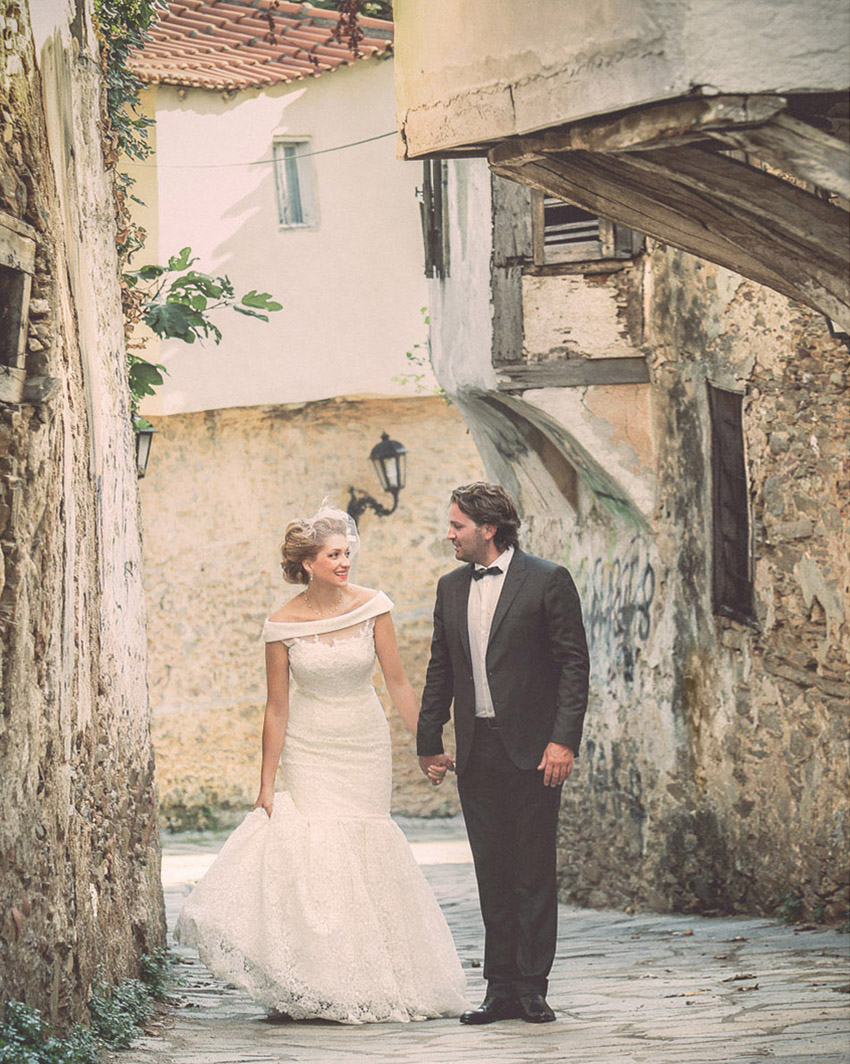


THE GREEK WEDDING TRADITIONS
Part 2/2






Paschalis Terzis as a guest sings with a bride in Thessaloniki
In many smaller towns and villages of Greece, a wedding band escort the bride from her home to the church and everybody dances all along the way!
The Bride's Bread is when the bride was about to exit her parent's home, her parents break a large wedding pretzel or “nifopsomo” over her head and give everybody present a piece so they can wish for a good life, happy marriage, health, and wealth to the bride-to-be.
The Mother-in-Law's Treat is when the bride's mother-in-law waits for her bride to come home after the wedding, she treats her with honey and walnuts. The honey symbolises the sweet life she wishes the couple to have and the walnuts symbolise fertility. Also, I've seen mother-in-laws place an iron ring under the doormat. The newlyweds step on the iron ring. That way, they are wished for a solid-rock marriage! Finally, some mother-in-laws place a piece of cotton on their bride's chest, wishing her to live a blessed life by their son's side until her hair is white!
Centaurus' Mountain Celebrate! Enchanting Pelio Μountain at the southeastern part of Thessaly has people that hold old wedding traditions like a Bible. Women ensure they make spoon sweets (or “gluko tou koutaliou”) and treats from the trees that flourish in the area so they can have them ready for an entire year. That way, if a wedding takes place during that year, they are well-prepared! At Zagora village, baklava was, and still is, a traditional wedding treat and its making is an important part of the whole ritual! It comes with such a strong symbolism of the couple's sweet new life that it comes as no surprise it's not missed from any wedding. Admittedly, the women here are masters of baklava, judging from my personal culinary experience!
Who's Next? Many modern Greek wedding receptions have borrowed events from other cultures. For example, throwing out the bridal bouquet to see who's next in line to get married is not among the Greek wedding traditions. The same applies to the Greek grooms that are seen using their teeth to retrieve their wife's garter and throwing it out to the single men present to see who is the next lucky guy to find his other half and get married. Nevertheless, we can't say we're not enjoying the new customs!
To the Cretans, weddings are a community thing; everybody participates and everybody celebrates a wedding! In fact, celebrations start the day before the wedding, when family and friends gather at the bridegroom's homes and have a feast with lots of wine and food. And this goes on and on for days after the wedding!
Just before the wedding, there's also another custom for the Cretans. The bride and her parents prepare a delicate basket with the groom's clothes (suit, vest, tie, shoes, etc.) and the same happens with the groom, who prepares his bride's wedding dress, shoes, underwear, and everything else she'll need to prepare for the wedding. Then, relatives from both sides deliver the clothes to the other side, greeted with treats and warm hugs. In some cases, a lovely “show” takes place, where the relatives “refuse” to hand over an item or try to “steal” an item from the other side's home!
As for the koumparos or koumpara, they have a special place in every Cretan wedding. Among the customs for the koumparos is the kaniski (gifts and presents) that should be given to the koumparos on Saturday night. At older times, that gifts included wine and a sheep or goat and signaled the start of a feast and singers singing local, traditional wedding songs! Today, the type of treats the koumparos gets varies, but the gamokoulouro (semi-sweet bread beautifully adorned) is a must.
The Cretans celebrate for days and days with lots of raki or tsikoudia, a strong distilled spirit, and Cretan wedding deserts known as xerotigana (fried dumplings with honey). Needless to say, the widely known gamopilafo is also a front-line dish!!!
Besides the stolisma, the koumparos or coumera used to write their names on a large, white ribbon that would be linked to the wedding crowns, during the ceremony. The more koumpari, the better! As a matter of fact, the success of a marriage was believed to be determined by the number of koumparos or coumera they had!

Τα μάτια της, τα μάτια του ήταν προξενητάδες,
ούτε προικιά γυρέψανε ούτε πολλούς παράδες.
Τον Ύψιστο παρακαλώ να σας χαρίζει χρόνους,
όπως χαρίζει στην ελιά τα φύλλα και τους κλώνους.
Εύχομαι σ’ όσους ήρθανε για να μας συγχαρούνε,
και στα δικά τους τα παιδιά τέτοια χαρά να δούνε.
(although it's very difficult – to almost impossible – to depict the sentiment delivered in Greek)
When their eyes met, they knew they had it all.
No dowry, no money was needed to make their love grow.
I pray to the Lord to give you many happy years
and give your marriage roots so deep to shake away all fears.
To those that have come to drink to our joy,
I wish them all the best and live the same joy.

There are many Greek wedding traditions, customs and rituals that are followed even nowadays with the most important and common ones outlined above. However, there are hundreds more that are not so well known as they come from small islands or villages and the only way to get to know them is to be part of one of those deeply traditional weddings in Greece!

I must admit I feel honoured to have been part of so many weddings during the last years and been treated like a beloved family member by so many Greek people within the geographic borders of our wonderful Greece and across the UK, the US, Germany and Australia. After a two decades shooting Greek weddings and their traditions, I have acquired an appreciation of the traditions from every corner of Greece's mainland and the islands of the beautiful Ionian, North and South Aegean seas, including Crete and our beloved Cyprus. However, the vastness of the Greek greatness and the richness of our traditions and customs will always amaze me as there is something new with each Greek wedding, whose moments I am called to immortalise and enshrine.
Σας ευχαριστώ θερμά!
If you like my work and you wish to hire me for your wedding get in touch! I love to travel and I would absolutely LOVE to be a part of your Greek wedding anywhere in the world!